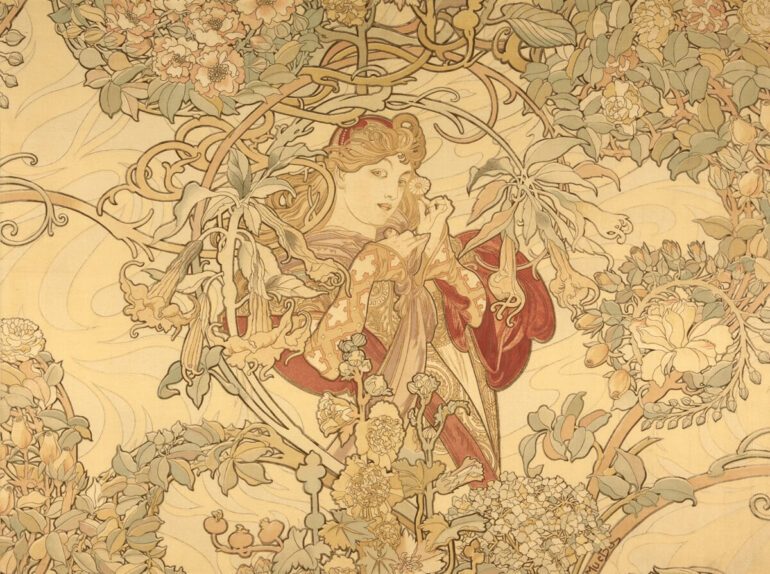An exhibition dedicated to the master of Art Nouveau who anticipated the language of advertising
Alphonse Mucha’s work is inextricably entwined with the Art Nouveau movement. You’ve most likely seen his work before – the use of fluid and seductive lines, ornate patterns and details and the predominance of the female form – but who was Czech artist Alphonse Mucha and what is the story behind his famed masterpieces? A new exhibition at the Museo degli Innocenti, the first of its kind in Florence, gathers 170 works by the Belle Epoque artist to tell the tale of the birth of one of the most recognizable artistic movements of the last century.
Art Nouveau is a style that developed at the turn of the century when industrialization and mass production encouraged artists to swing the opposite way, toward nature and organic forms. For Mucha, leaves, flowers, curving vines and sumptuous drapery seemed to find their match only in graceful forms of the female body. Alphonse Mucha was born in southern Moravia, then part of the Austrian empire, but he found his artistic success in Paris in the 1890s.
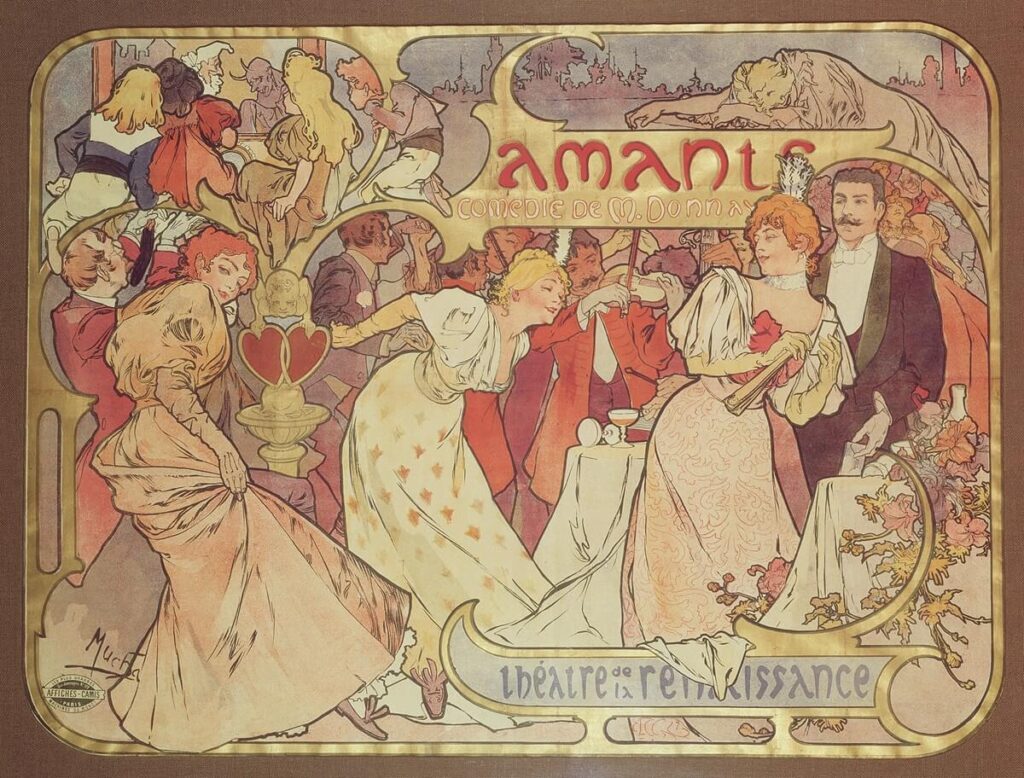
The exhibition opens with this moment in his life, and the impressive two-meter-tall promotional poster of famed actress Sarah Burnhardt who starred in the 1894 play Gismonda. This collaboration with the theater would not only launch Mucha to fame – and numerous other poster and public works commissions – but would solidify his style in the collective imagination of the public: rich Byzantine detail, sinuous lines and a powerful emotional draw of his subjects.
From here, Mucha’s career began to flourish. The exhibition introduces us to sketches of his time in Brittany, works on items like fans and ceramics and some of his most famous pieces: the four seasons. This series of prints met the need of a public who was interested in collecting images, but couldn’t afford original pieces of art. Sold as calendars, postcards and prints, these prints foreshadow the era of the proliferation of the image to meet consumer needs and perhaps help explain why so many of us are familiar with Mucha’s work today, over a century later.
INSPIRATION
Best Museums in Florence
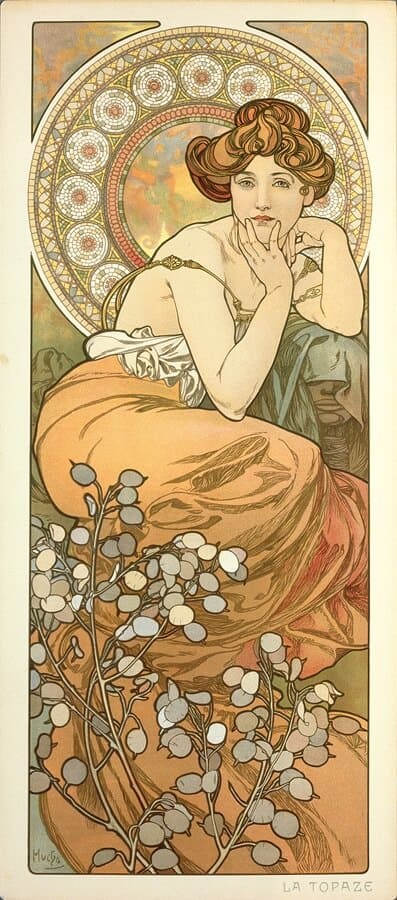
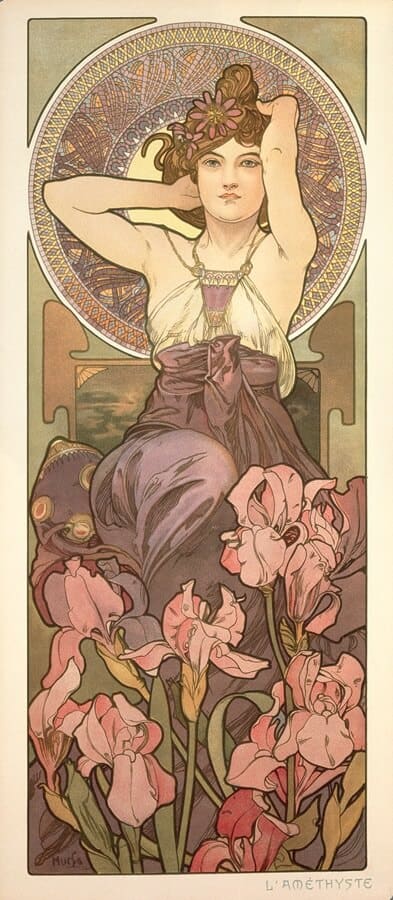

Mucha in fact believed that art and advertising both had a common goal of communicating with their audience, be it to sell a product or to inspire a religious or historic message. Some of his iconic advertisements can be found in this exhibition as well as delicate perfume bottles and biscuit tins showing how the medium might change but the classic Mucha style remains immediately recognizable.
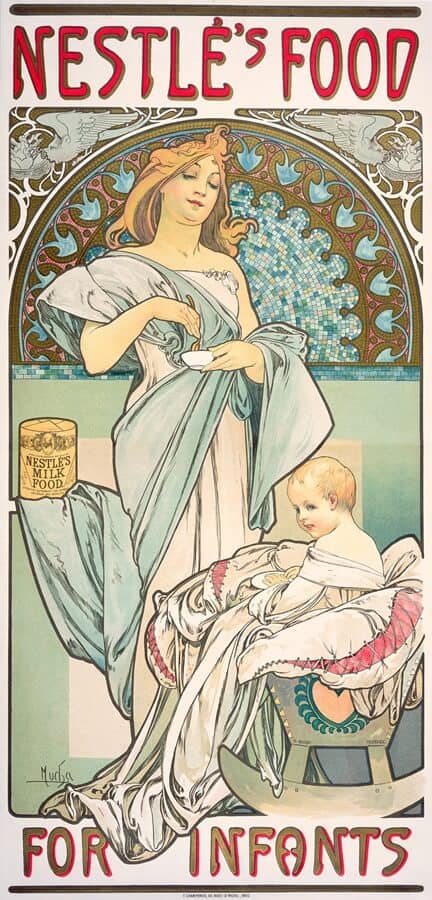
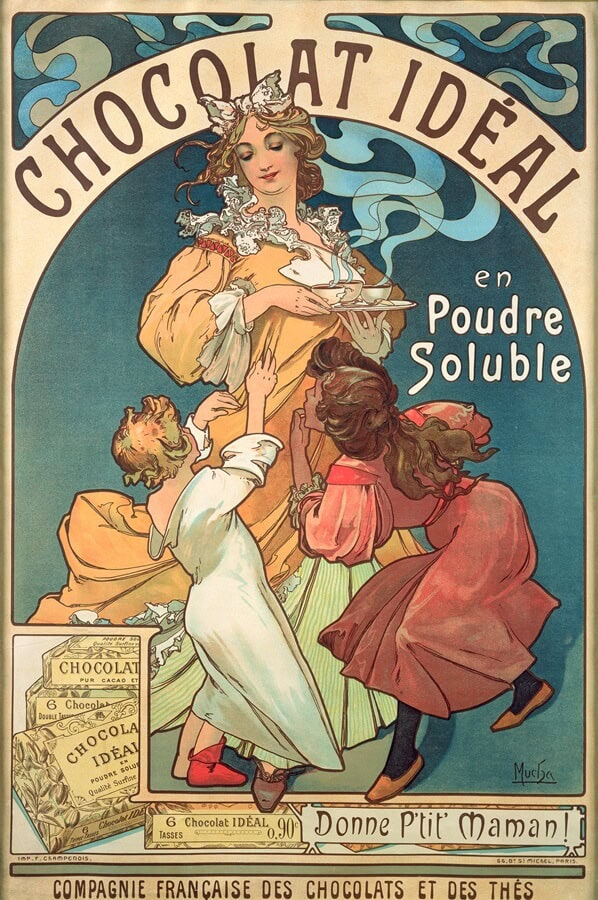
An enlightening portion of the exhibition recalls Mucha’s Slavic roots and his dream to serve his homeland through his art. Producing imagery that celebrated Slavic style and history, Mucha eventually created a series of 20 enormous historical paintings displayed in Prague to mark the anniversary of the nations’ independence from the Austro-Hungarian rule (these are now on display in southern Moravia). This and his work on Le Pater – Mucha’s illustrated interpretation of the Lord’s Prayer – are a reminder that while he may be more widely known for his commercial work and graphic designs, he was a proud patriot and a spiritual man, capable of turning his artistic talents to the glorification of country and the divine.
Art nouveau (called “Liberty” style in Italy) also had a heyday in the land of ancient emperors and Renaissance “Madonnas con bambino” and the Mucha exhibition culminates with a look at the Tuscan artist Galileo Chini. Embracing the new style at the end of the 19th century, Chini’s sketches and paintings are on display along with his designs for pottery that can rival the ceramic works of Luca della Robbia seen all over Florence.
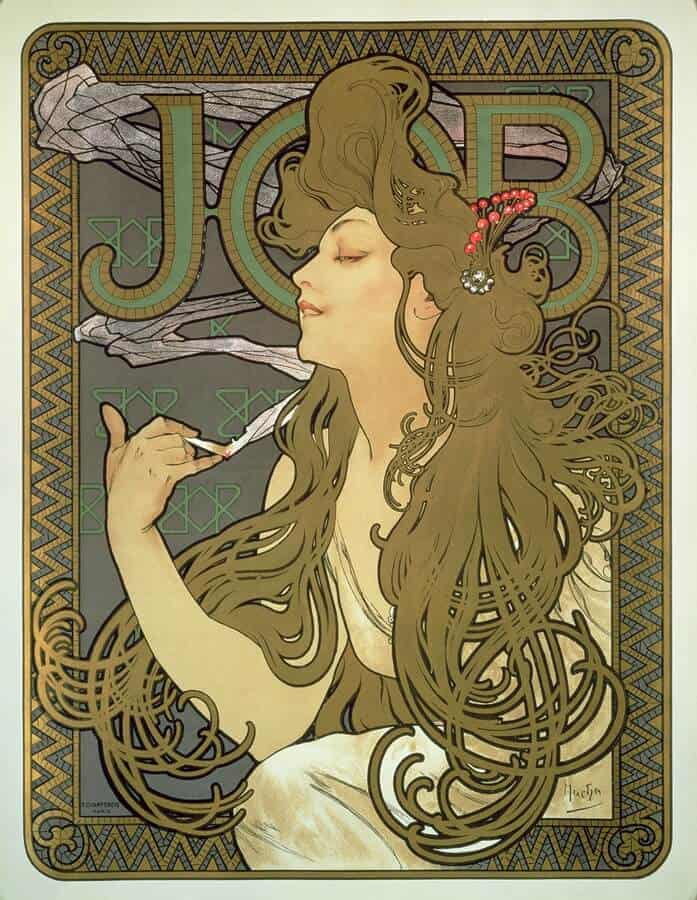
While past Museo degli Innocent exhibitions have featured more interactive elements, the Mucha exhibition has only one virtual reality tunnel where museum-goers can traverse a floor of dancing flowers reflected on all sides by mirrors. Perhaps the main attraction beyond the exhibit itself is the gift shop where Mucha’s most famous pieces can be found adorning tote bags, postcards, notebooks and more, begging the visitor to take a piece of Mucha home with them.
Alphonse Mucha believed that “art can never be new … Art is eternal like mankind’s progress, and its function is to light the way for the world.” He believed art could inspire humanity to follow its higher values and to strive for greater things. Stepping out of the Museo degli Innocenti back into the square of Santissima Annunziata in Florence, I can’t help but feel lighter, ready to look for the beauty in all things.
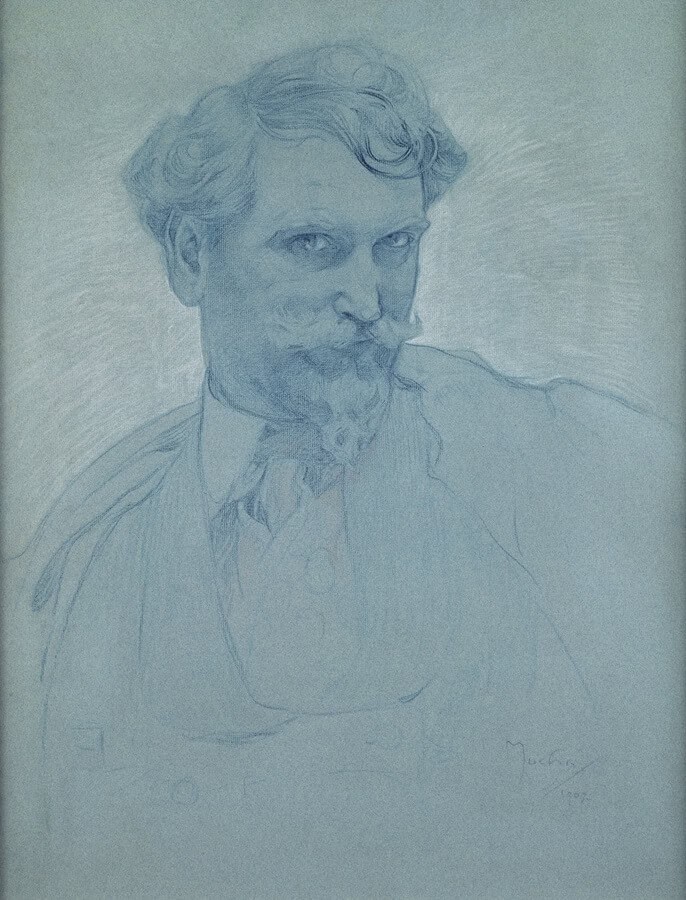
Until 7 April 2024
Museo degli Innocenti
P.za della SS. Annunziata, 13
Opening hours: Every day: 9:30am- 7:00pm (ticket office closes an hour before)
Reduced Hours or closed: Dec 24, 25, 31, January 1, March 31, April 1
Ticket: €17.50 per adult, €8.50 reduced
museodeglinnocenti.it/alphonse-mucha/


